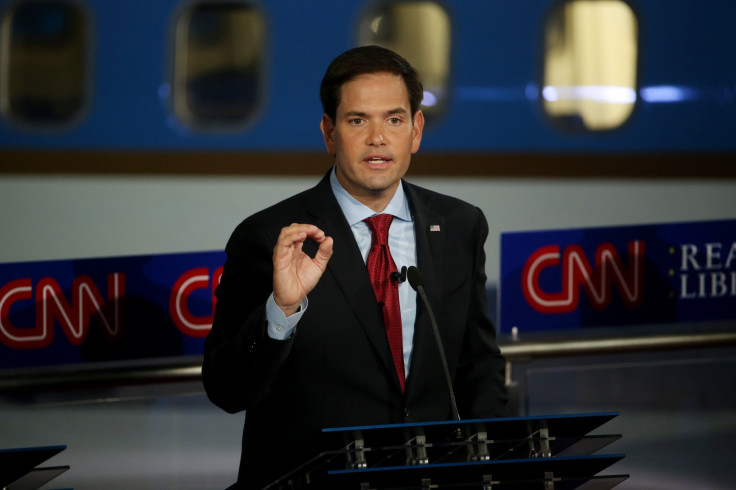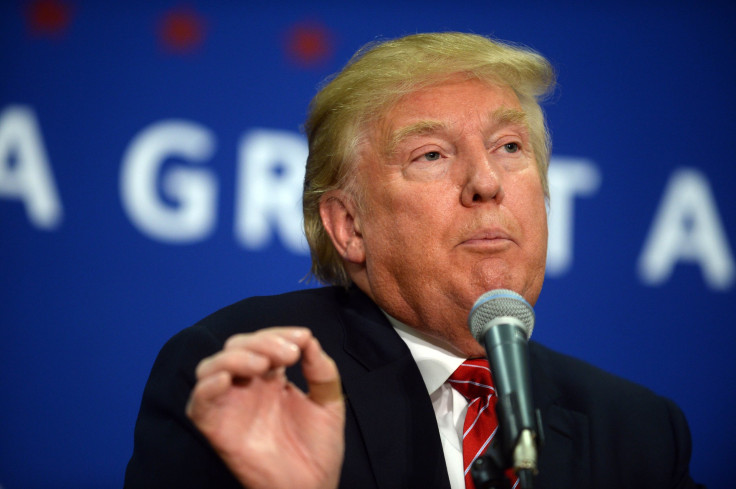Trump vs Marco Rubio: Whose Tax Plan Is Better For Low-Income Americans?

As Donald Trump has turned his attention to insulting Marco Rubio over the past two weeks, he has often criticized the Florida senator for having “no money.” And yet Trump also says he -- and particularly his tax plan -- will help everyday Americans, many of whom are much closer to having “no money” than Rubio.
Rubio has been clear about his struggles with student loan debt, mortgages and other financial problems, but for the most part, this seems to have made him seem relatable to voters. After all, 70 percent of students graduate from college with debt, and that number is growing rapidly.
Both Republican candidates say they will save American families money and help grow the economy, but which one would be best for families at the lowest end of the income spectrum?
Trump released his tax plan Monday, which would give significant tax cuts to people across the board. For the bottom group of earners, Trump says that single wage earners making less than $25,000 a year and married couples who earn under $50,000 would pay zero income tax. However, many of the lowest-income Americans already pay no federal income tax, making this not a huge change for that bracket.
Another big factor in lower-income Americans’ taxes is the Earned Income Tax Credit, which allows families to receive refunds from the government depending on the number of children they have. Families can also receive refunds through the Child Tax Credit. Trump’s campaign staff directed International Business Times to his website when asked for more information about his plans. But staffers said he does plan to keep these credits, according to CBS.
However, despite the cuts in Trump’s plan, lower-income Americans are likely to see fewer benefits than those at the top of the scale, according to Kyle Pomerleau, an economist at the Tax Foundation’s Center for Federal Tax Policy. The bottom 10 to 20 percent of Americans will see a tax cut of 1.4 and 0.6 percent, respectively, he said, while the top 1 percent of people will see an increase in after-tax income of 20 percent.

Rubio’s plan is very different than most Republican tax plans and is actually a version of a plan he developed with Sen. Mike Lee of Utah. It would reduce the number of tax brackets to two: one at 35 percent and the other at 15 percent. For single tax filers, all income up to $75,000 would be taxed at 15 percent and income after that would be taxed at the 35 percent rate. For married couples, income up to $150,000 would get the 15 percent rate while income over that would be taxed at 35 percent. And although everyone will pay some taxes, unlike Trump's plan, Rubio's proposals may ultimately do more to help out low-income families, according to tax experts.
People who currently pay the 10 percent income tax rate would be bumped up to 15 percent under Rubio’s plan, but this would not result in a large increase in how much they actually pay. Andrew Pike, a law professor at American University who specializes in tax law, estimated that such taxpayers would see an increase of $460 a year in taxes.
But Rubio’s plan also includes other provisions that he says will help families, such as creating a new Child Tax Credit of $2,500, which is an increase over the current Child Tax Credit that can give parents a maximum of $1,000 per child. This is aimed at middle-income families rather than those at the very bottom of the tax bracket, according to Pomerleau, and it does not phase out as a family’s income increases, so families at all levels have access to it.
Rubio also wants to replace standard deduction and personal exemptions with a refundable personal tax credit. “Every tax filer essentially starts off with a $2,000 check,” Pomerleau said of this idea.
Overall, the lowest 10 percent of earners will see an increase in after-tax income of 45 percent, according to Pomerleau. In Rubio’s plan, the top 1 percent will see an increase of 11 percent in after-tax income.
Neither politician’s plan goes into much (if any) detail about how each will pay for these tax cuts, which means that other parts of the federal government could be affected in order to enact these plans. If that’s the case, it is possible that some services benefiting low-income families could disappear. But when comparing aspects of the two plans that directly affect the lowest-income Americans, Rubio seems to come out on top.
© Copyright IBTimes 2024. All rights reserved.






















